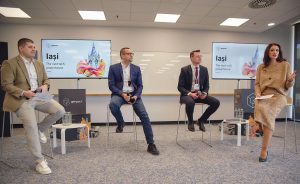“Work from home” will no longer dominate the labor market in 2022: K2S

In the context of a favorable evolution of the Covid-19 pandemic, the main trend that will dominate the labor market in 2022 will no longer be work from home, but hybrid work – a mix between remote work and office work. This year’s trend chart is complemented by an acceleration of artificial intelligence, the integration of mental health programs among employees, the emphasis on skills and not on roles, but also on monitoring productivity at work.
In this context, the main challenge for companies in 2022 will be to find a balance between the growing expectations of employees regarding a flexible work schedule and maintaining a solid organizational culture and teamwork, reveals an analysis of the human resources solution company K2S – Key 2 Success.
“Data shows that approximately 90% of Romanian employees, managers or specialists, are satisfied with the increased freedom that hybrid work brings, suggesting that this will probably be a trend that will prevail in the medium and long term.
Therefore, 2022 comes with new challenges for employers – especially in the area of continuous reinvention of procedures and processes, team cohesion and internal communication. The latter replaces the limited physical presence at the traditional workplace and balances the negative impact of pandemic news. All these will continue to put pressure on top management and human resources departments, to listen more to the suggestions of employees and develop programs to make employees feel connected and motivated”, says Valentin Dima, Senior Consultant at K2S.
In Romania, studies show that about 18.4% of employees started working from home as a result of the COVID-19 pandemic, while the European average of those who started working remotely due to the pandemic is 36, 8%. Globally, the figures show that 70% of employees want to continue to have access to flexible remote work options and 65% of them say they want to work more often with their colleagues.
The World Economic Forum predicts that artificial intelligence and automation will lead to the creation of 97 million new jobs by 2025. Artificial intelligence will be used primarily to automate a series of repetitive activities to enable employees to focus on activities that require more complex work, creativity, or emotional intelligence. Some examples include lawyers who will use the technology to reduce the time spent reviewing case histories to find precedents. At the same time, doctors will have computer vision capabilities to analyze medical records and then be able to diagnose patients.
Employers are also beginning to understand the critical importance of integrating employee health and wellness strategies, including mental health, into company goals, seeking to reinvent the definition of well-being in the workplace.












